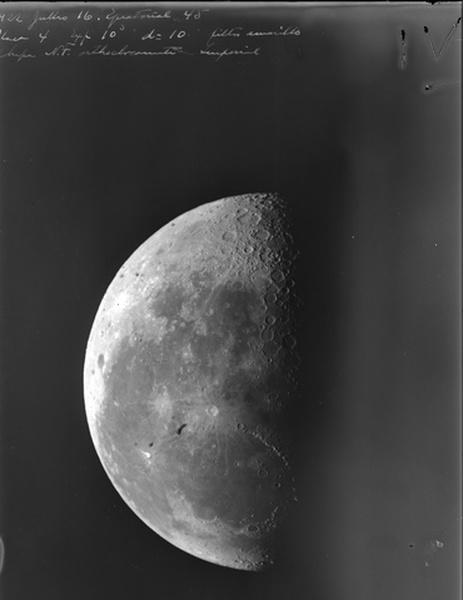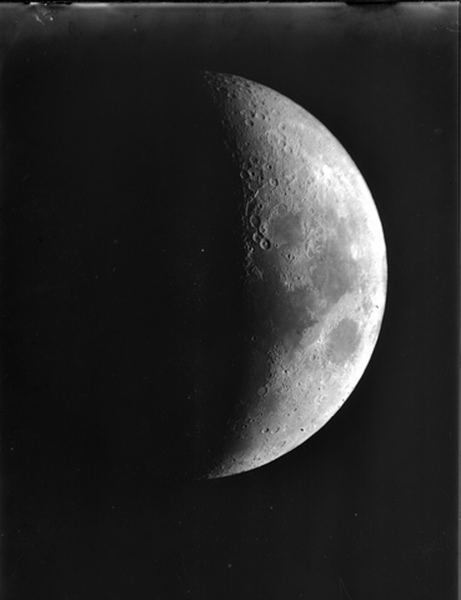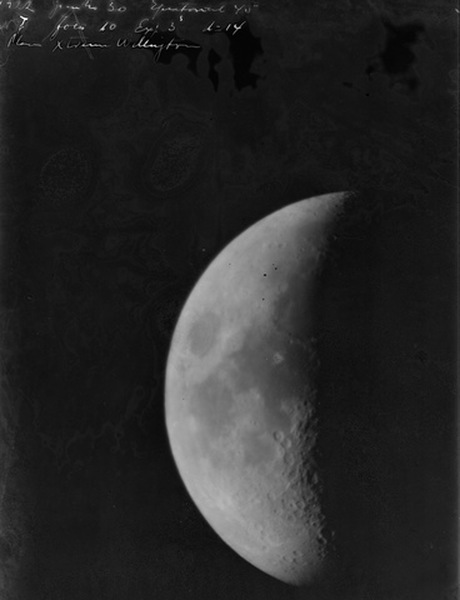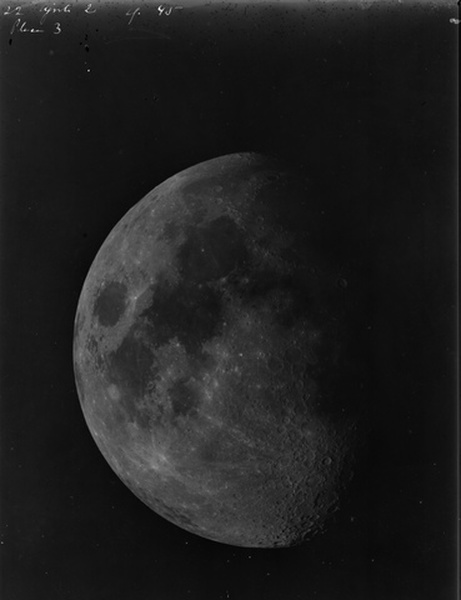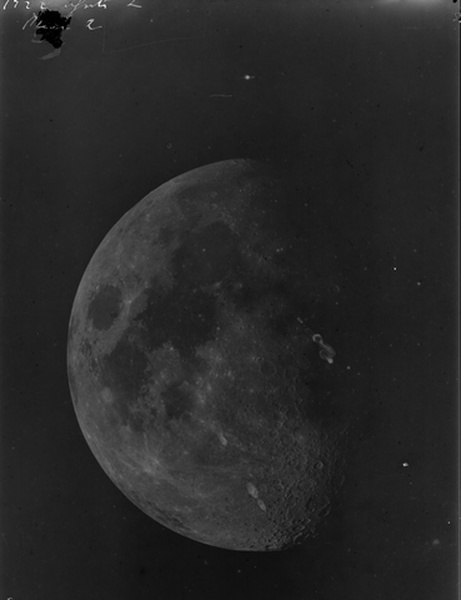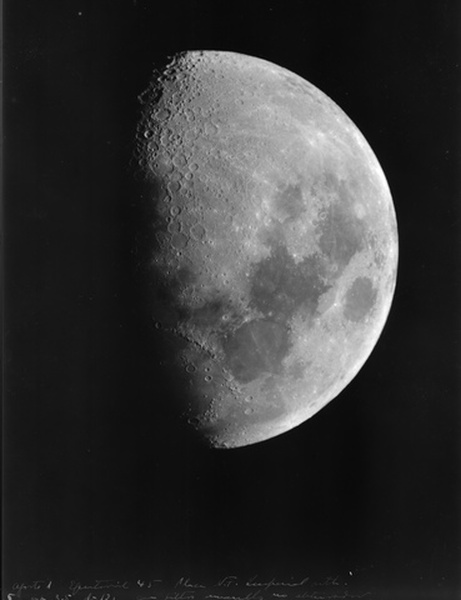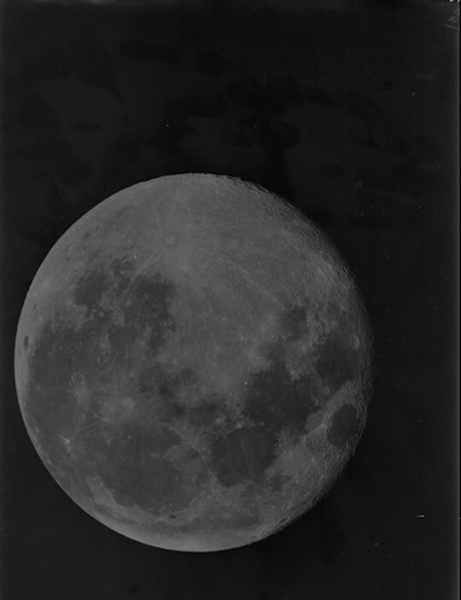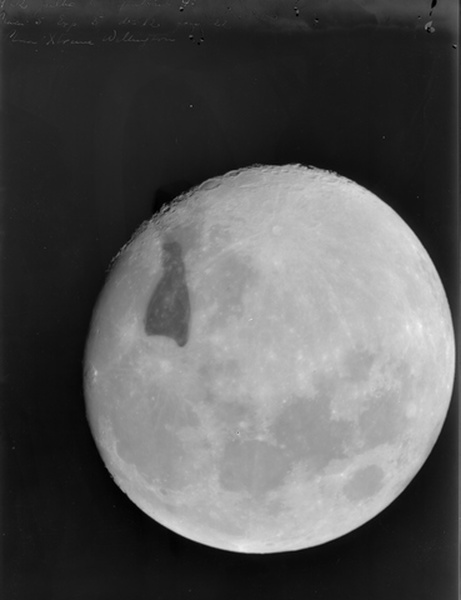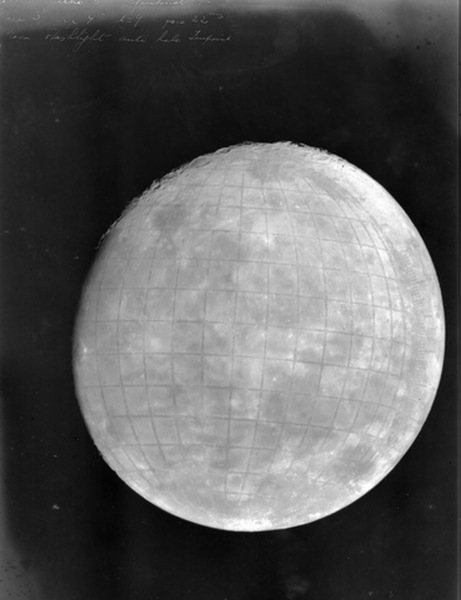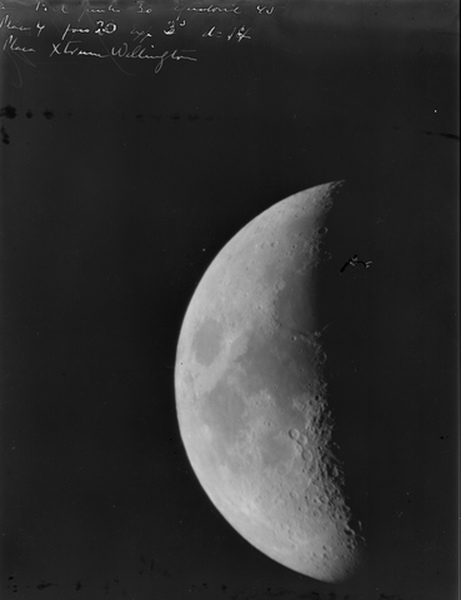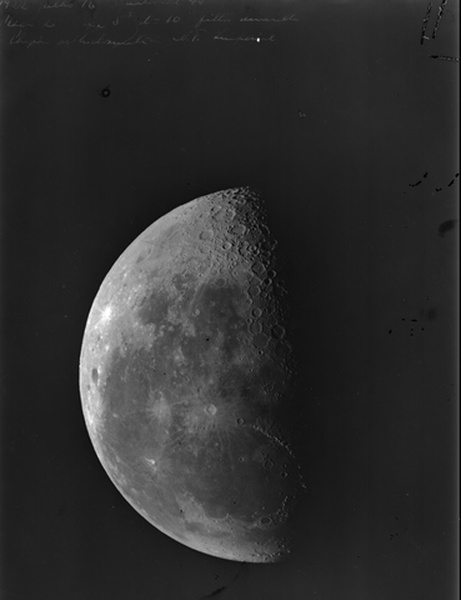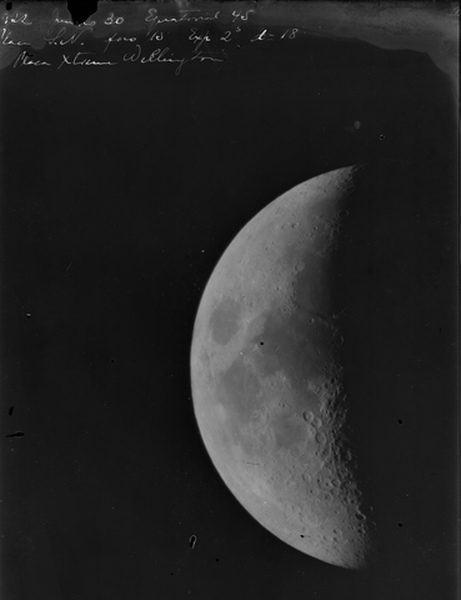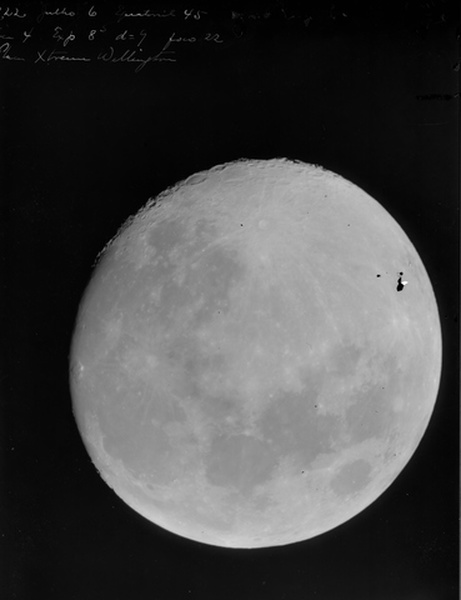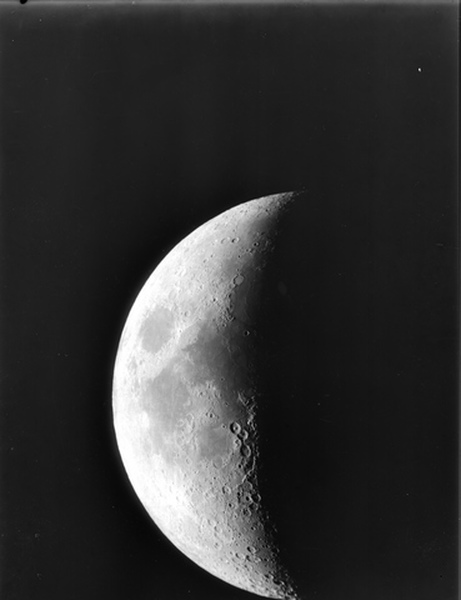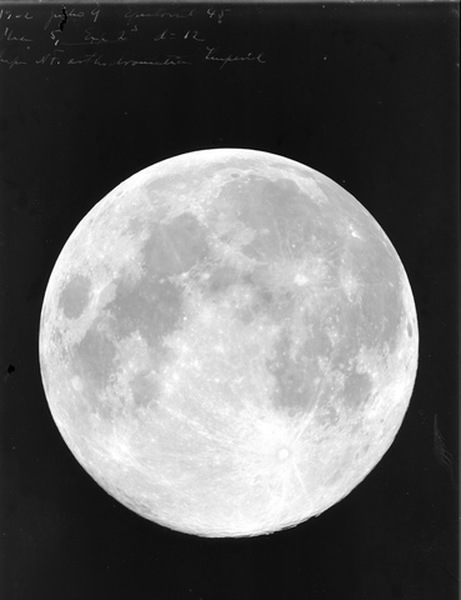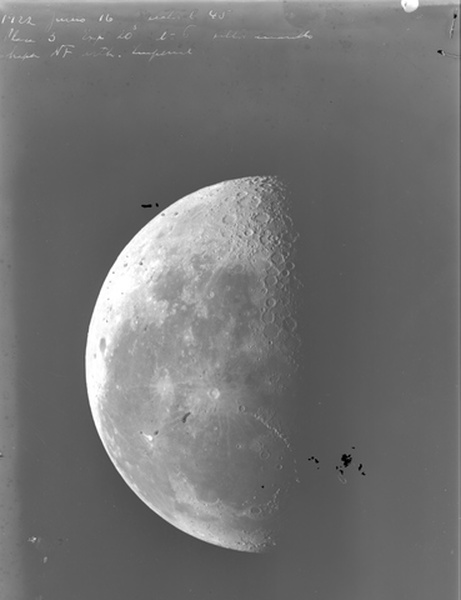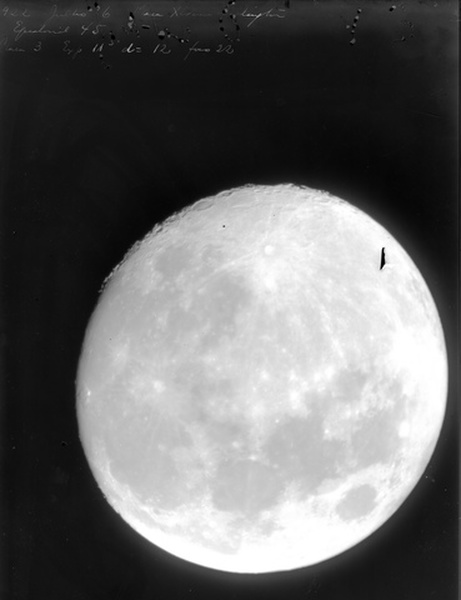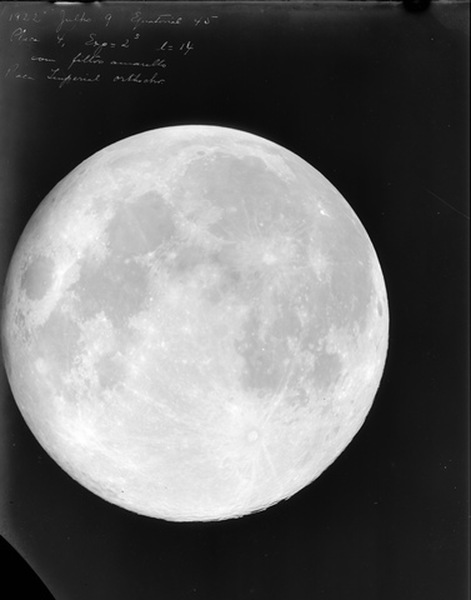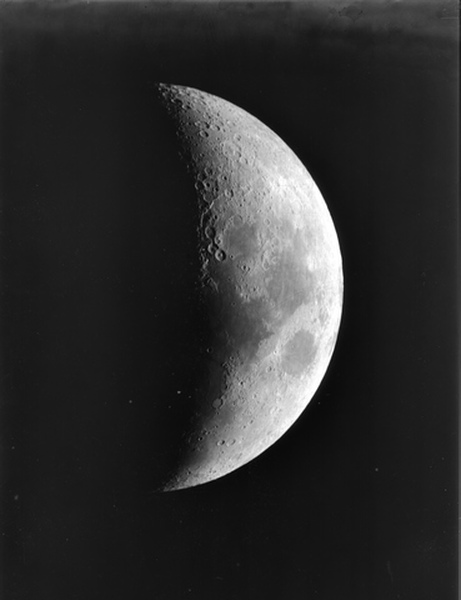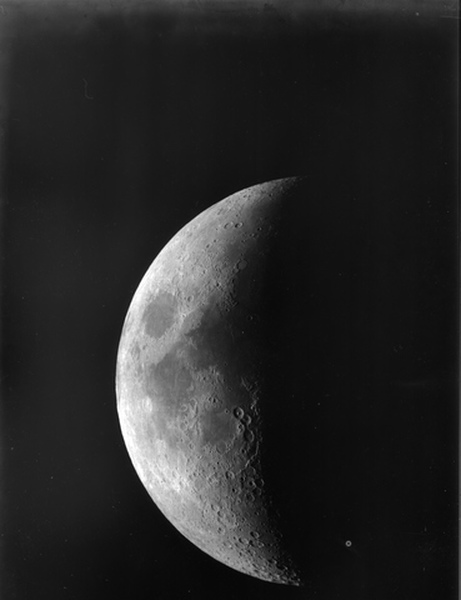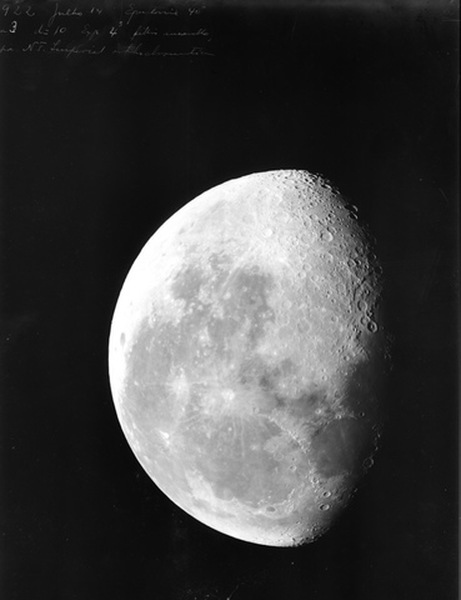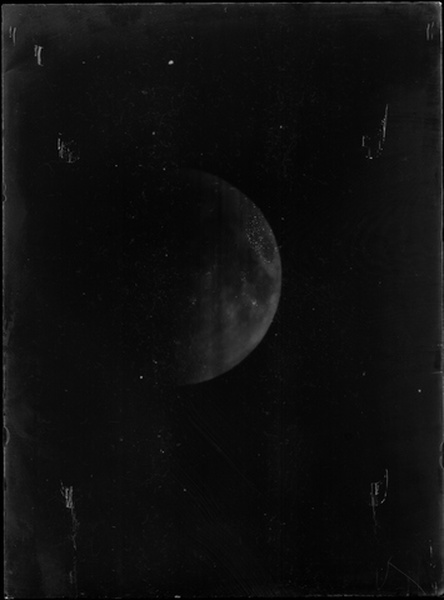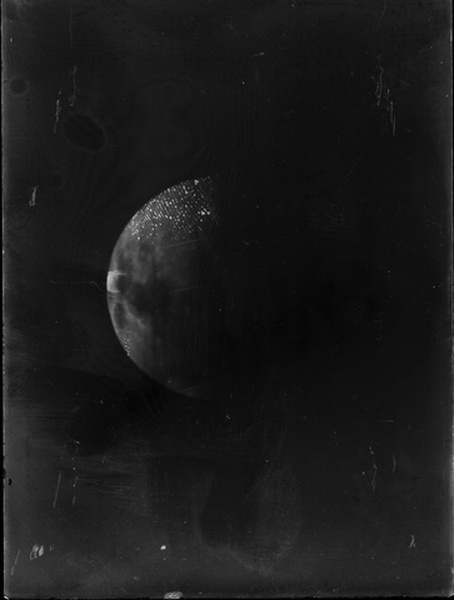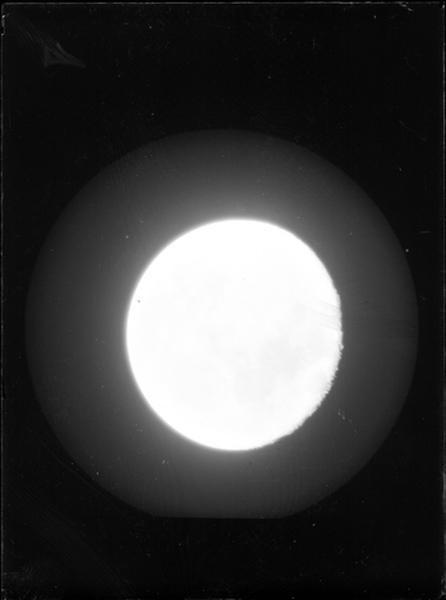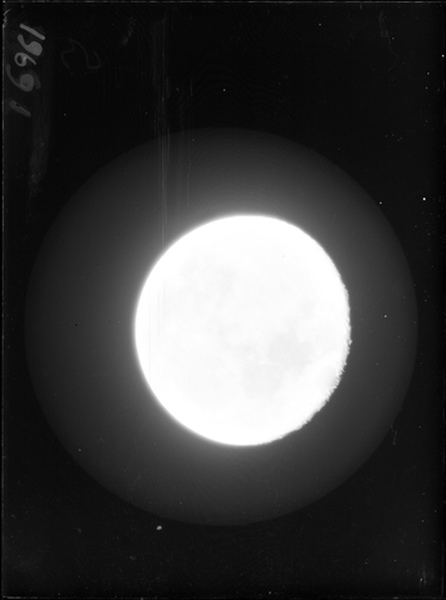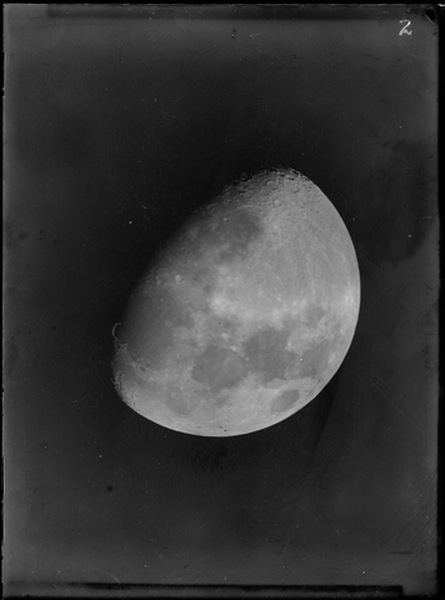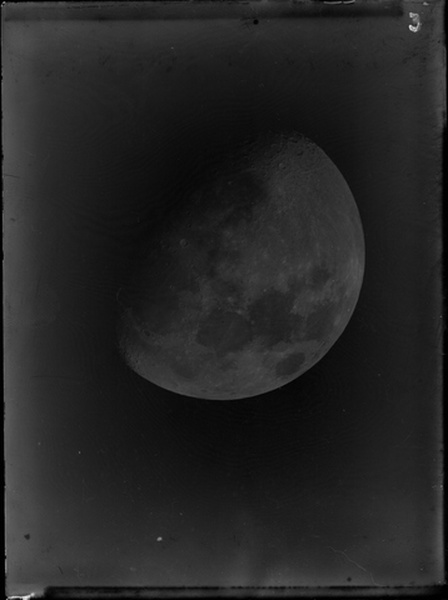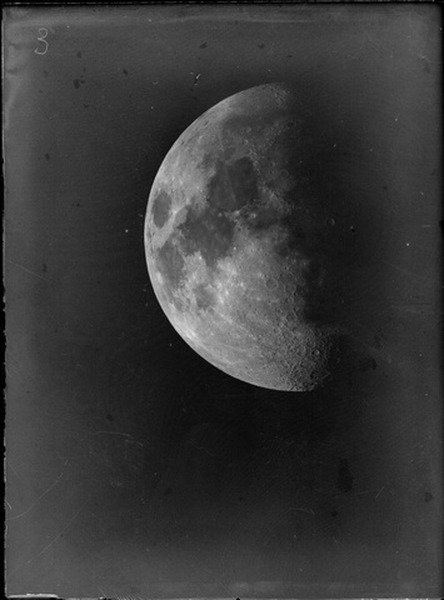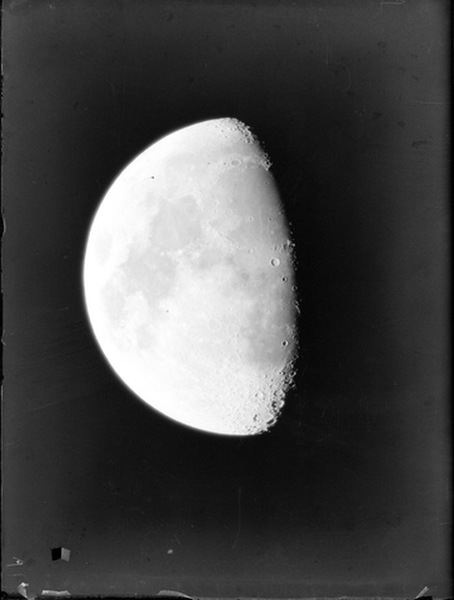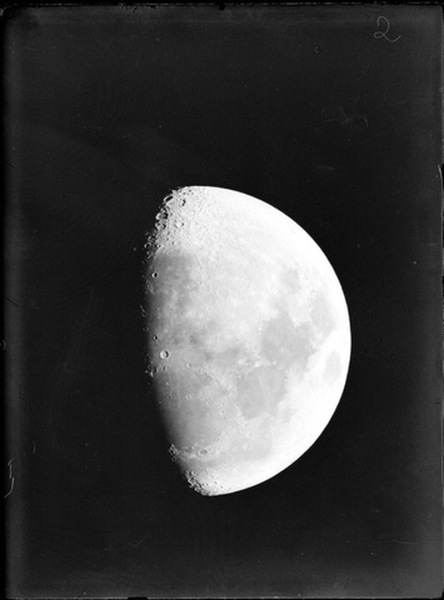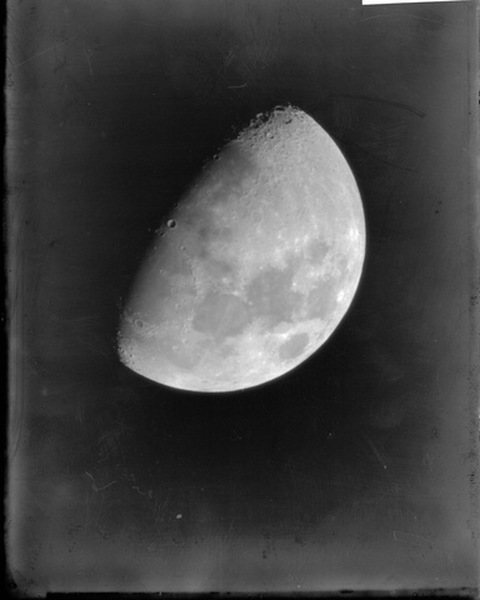
Moon
In this topic, a set of digitalized images of photographic glass plates containing observations of the Moon are shown. To reduce the great luminosity of our natural satellite over the objective, the telescope was diaphragmed to its maximum. In addition, to observe the details of the lunar surface, a yellow filter was applied.
Most of the Moon plates were made during the time of the installation of the Great 46cm Equatorial Telescope, on February 16, 1922. Many projects were carried out with this refracting telescope, allowing Brazil to enter the international programs of observation of double visual stars, planets, asteroids, comets, solar and lunar eclipses, and the program of star occultation by the Moon.
The Moon observations were tests to analyze the optical quality of the telescope and the astrophotography cameras.
The interesting part is that it was written on the notes “45cm Equatorial”, and not 46cm, which is an approximation of 45.8cm, the exact size of the diameter of the objective lens of the telescope.
Learn more about the Moon: its movement, forecast of phases and of sea tides, with lunisolar effect and forces diagram, variation of the distance to earth. 3D visualization at the website: https://daed.on.br/astro
Note: The images of scanned plates have their names formed, initially, by three letters associated to a number to facilitate their location in the digital database and physical archive of the Observatório Nacional library.


